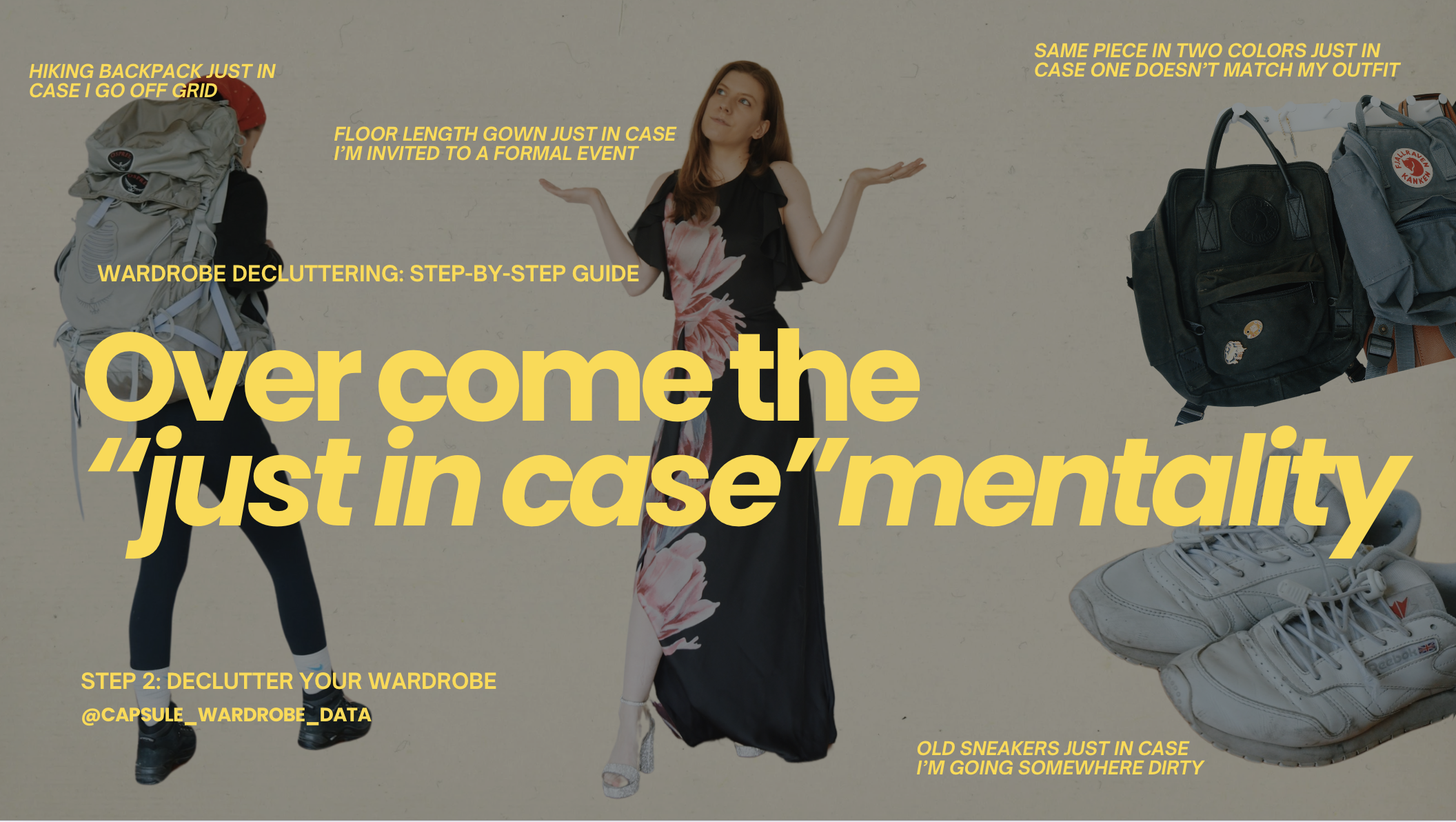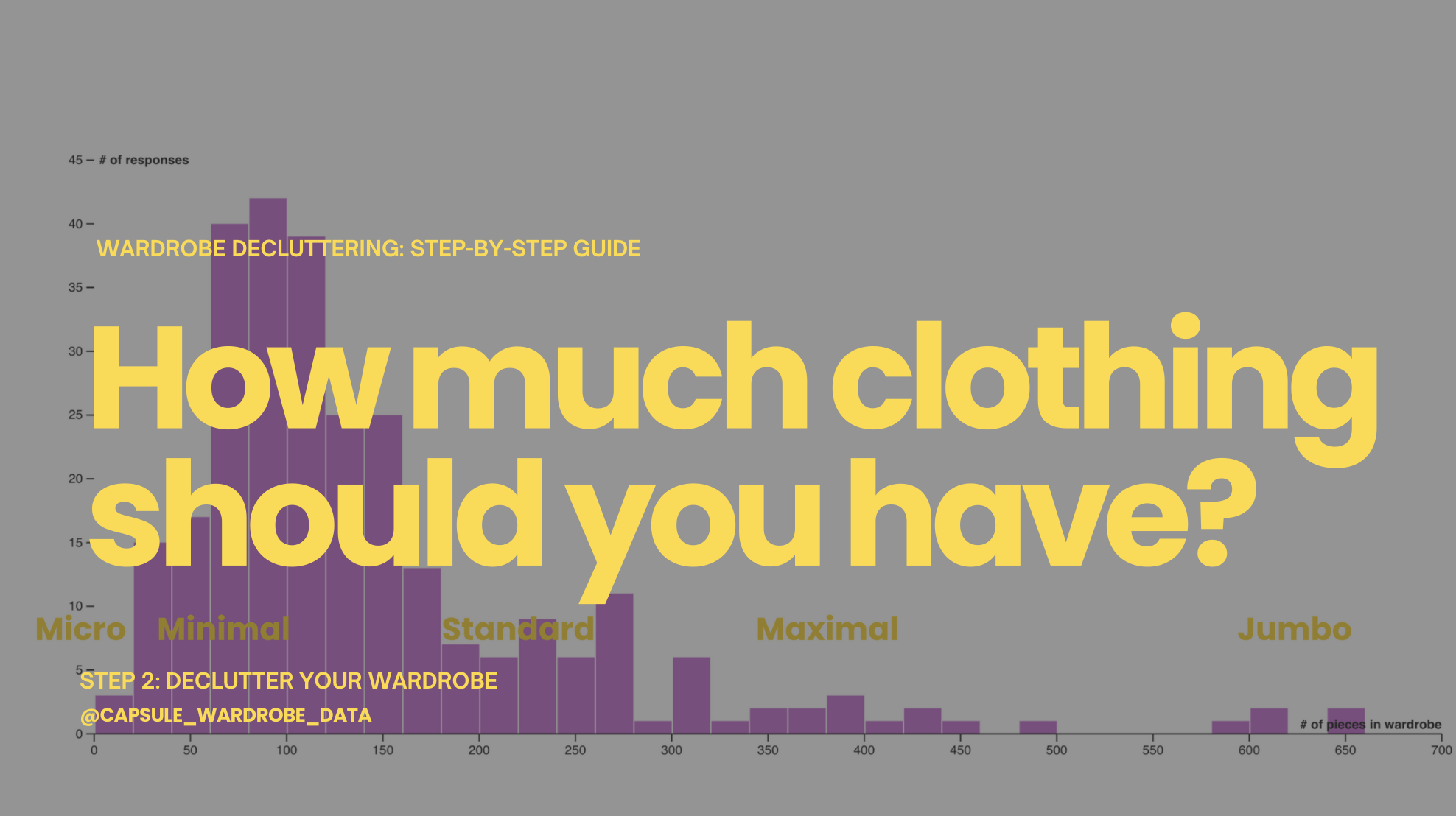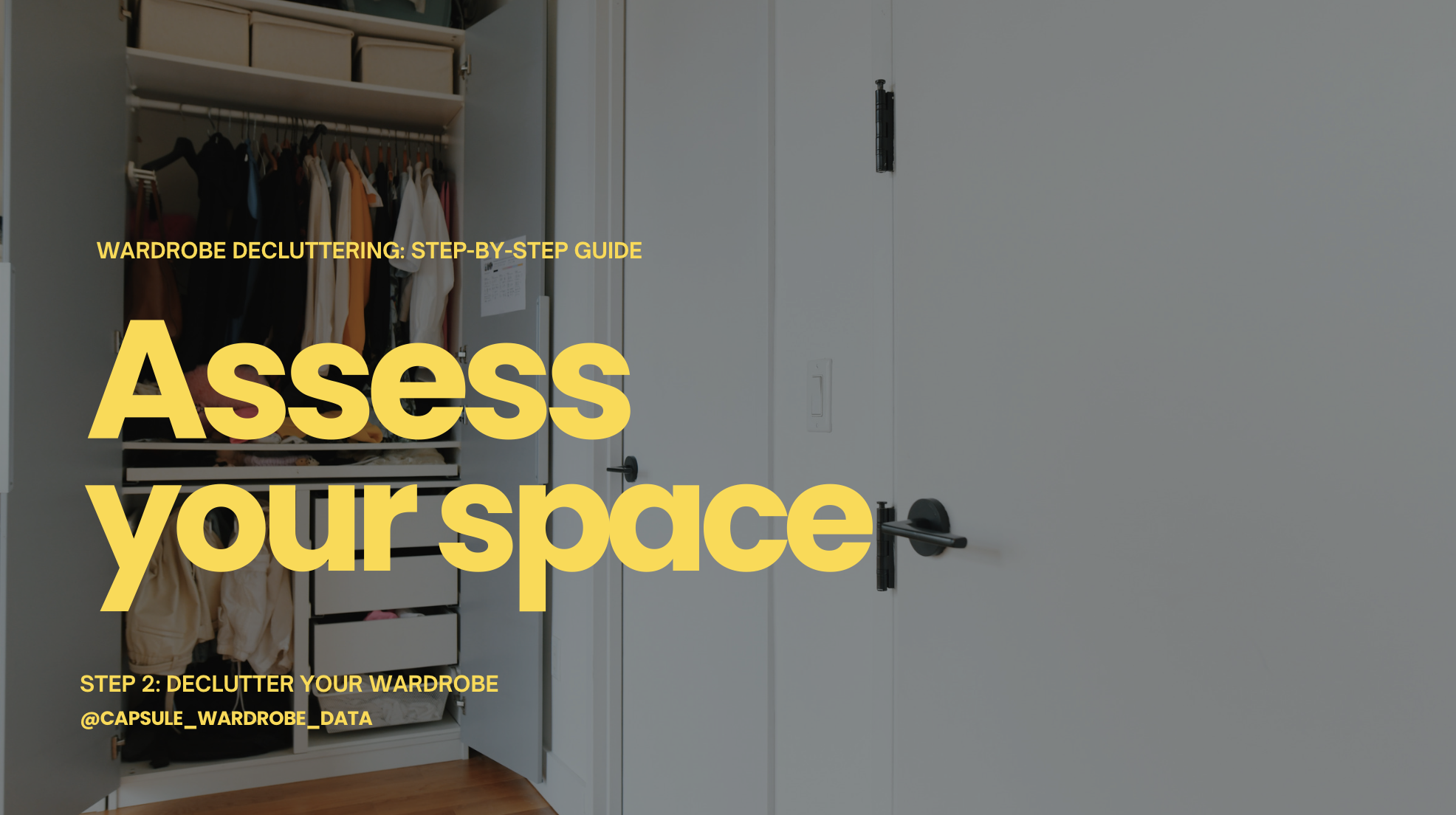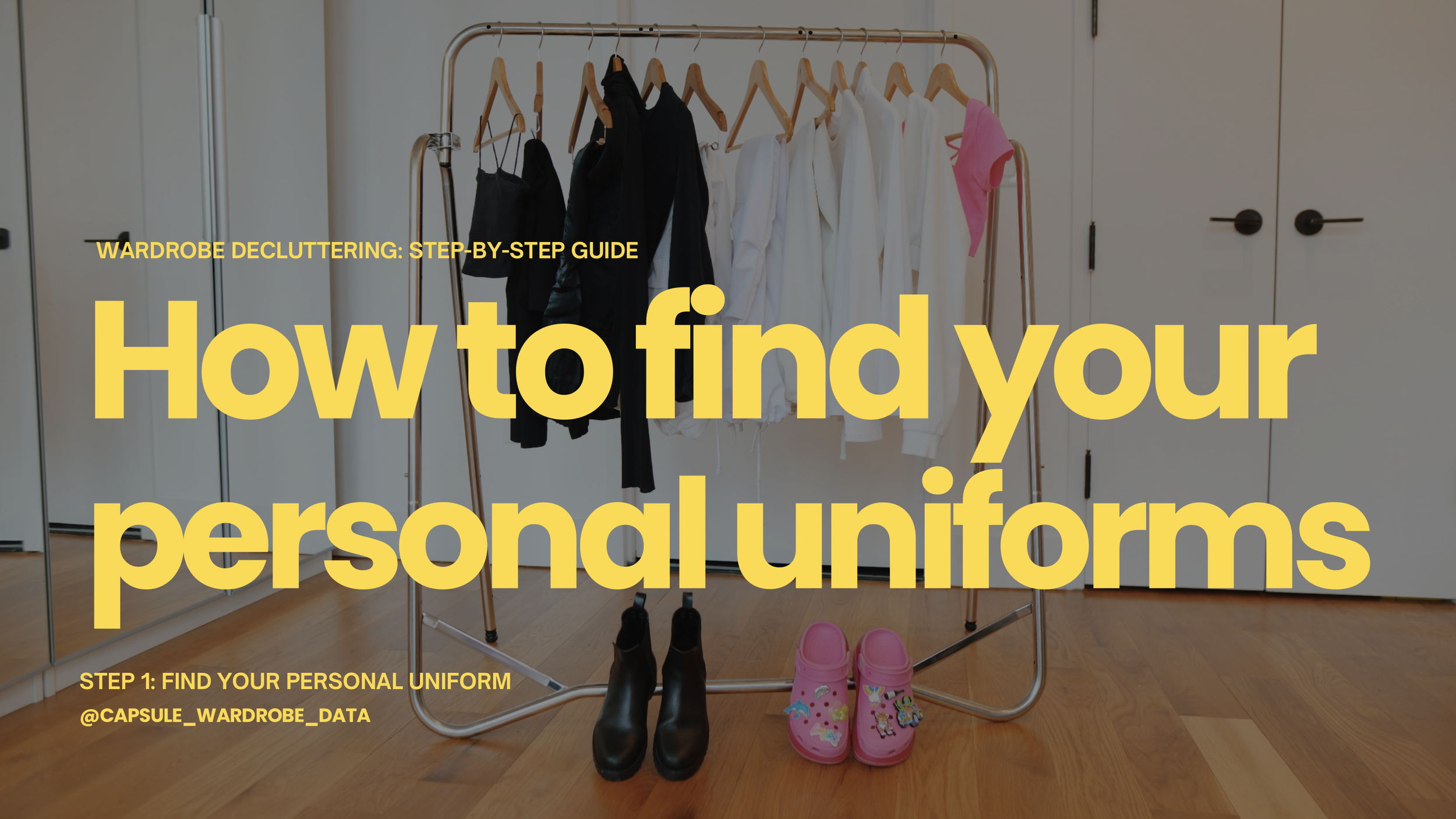It may be tempting to grab handfuls of clothing you’ve decided to keep and toss them back into your closet. However, storing wardrobe pieces thoughtfully makes it easier to get dressed in the morning and put laundry away over the long term.
Deep clean your wardrobe
Starting with a clean slate will set the foundation for an organized wardrobe. During the cleaning process, you might find additional clothing pieces that you missed earlier. By now you’ve gained experience in reviewing pieces and deciding whether to keep or retire them. Be prepared to make a few more decisions along the way. You’ll also likely find non-wardrobe pieces during this process as well. We’ll cover what to do with those in this post as well.
Declutter sentimental wardrobe pieces
For this post, ‘sentimental’ refers to pieces in your wardrobe that hold a strong connection to a person, place, or meaningful time in your life. These pieces can bring joy and comfort, so it’s perfectly fine to keep some of them in your wardrobe.
While some people advocate for detaching from belongings to simplify decluttering, this isn’t always necessary. There’s a purpose in wearing pieces that have significance to you; they can spark confidence and bring a sense of peace, like wearing a cozy sweater from someone special during stressful times.
Incorporating sentimental pieces into your wardrobe also ensures that your style is personal to you, rather than a copy/paste of whatever is trending at the moment.
Overcome the “just in case” mentality
For the purposes of this post, the “just in case” mentality refers to the unreasonable collecting
of wardrobe pieces that are kept out of fear they will be needed in the future.
Remove non-uniform clothing
In the previous posts, we reviewed how to find your personal uniform, how to assess your space, determine how much clothing you should have, how to determine how many pieces to retire, and how to identify unwearable clothing.
In this post, we’ll continue decluttering your wardrobe by identifying pieces that do not align to your personal uniforms.
What does non-uniform mean?
For this post, non-uniform means pieces that do not align to your personal uniforms.
Remove unwearable clothing
In this post, we’ll begin decluttering your wardrobe by starting with pieces that are no longer wearable for you.
What does ‘unwearable’ mean?
For this post, unwearable means pieces that can’t or shouldn’t be worn anymore such as those that are:
Damaged beyond reasonable repair
Incorrect size or fit
How much clothing should you have?
The first question most people ask when they want to transition to a minimal wardrobe is: how much clothing should I have?
283 people from around the world completed a survey where they counted every piece of clothing they owned - including things out of season, in the laundry, their gym clothes, pajamas - everything except for under garments!
We’ll use the survey results as a benchmark to compare to what you currently have and assess how much you need for your personal uniforms.
Assess your space
Before we begin removing items from your wardrobe, it’s important to assess and document the “before”. Assessing the closet space available for storing your wardrobe, shoes, and accessories will help you understand the limitations and possibilities of your storage area. It can also be motivating to compare your “before” and “after” to help you maintain a minimal wardrobe going forward.
Step 2: Declutter your wardrobe
Remove pieces in your wardrobe that don’t align with your personal uniforms or are no longer wearable for you.
For the second step of the Wardrobe Decluttering: Step-by-step guide for a clutter-free closet that lasts, we’ll cover how to declutter your wardrobe.
Before we begin this segment, it’s important that you have a personal commitment to decluttering, otherwise the following posts won’t be effective.
Your personal uniform cheat sheet
In this post, we’ll review how to document your personal uniform into a cheat sheet. I’ve found that people are more likely to maintain their defined personal style and personal uniforms when it’s documented.
Additionally, before beginning to declutter your wardrobe, it will be helpful to have this ‘cheat sheet’ to help you decide what to keep and what to retire.
Accessories & personal uniforms
Now that we have our personal uniforms, it’s time to accessorize them so you’re ready for any occasion and any weather. In this post, we’ll review how to incorporate accessories into your personal uniform.
Appearance & personal uniforms
Some professional uniforms, such as in the military, also include requirements related to hairstyles and grooming. When creating your own personal uniforms, it’s also important to consider how your hairstyle and grooming contribute to your look.
How to find your personal uniforms
Personal uniforms are a standardized look that people create for themselves to simplify their daily routine. Many folks who create a personal uniform don’t struggle with figuring out what to wear everyday because they’ve created a standardized outfit to wear instead.
How to find your work uniform
In the previous post we reviewed how to find and define your personal style. Now it’s time to create your first personal uniform! I dedicated this post to the work uniform because for most of us, what we wear to work is a more reserved version of ourselves.
How to define your style
If you’re interested in creating your own personal uniforms, it’s important to define your style so it can be your guide while decluttering your wardrobe.
Most people don’t fall neatly into wearing one style, but are usually a blend of two or three different styles. If you haven’t already, read my previous post, “What are the different types of fashion styles?” to familiarize yourself with these and see photo examples.
Types of fashion styles
If you’re interested in creating your own personal uniform, review these common fashion styles to identify which ones reflect you best.
Types of personal uniforms
While personal uniforms are commonly seen as something professionals wear, such as Mark Zuckerberg and Anna Wintour, personal uniforms can be applied to all facets of our lives like what you wear everyday, to the gym, formal occasions, and lounging around.
What is a personal uniform?
A personal uniform is a standardized look that people create for themselves to simplify their daily routine. Many folks with personal uniforms don’t struggle with figuring out what to wear everyday because they’ve created a formula to help them get dressed instead.
What is a uniform?
Uniforms transcend clothing; they are visual symbols that convey meanings, shape perceptions, create unity, and serve as a tangible representation of shared values and commitments.
Step 1: Find your personal uniform
Create personal uniforms based on your lifestyle that allow you to easily mix and match your clothes to create cohesive looks you love with a minimal set of pieces.
















